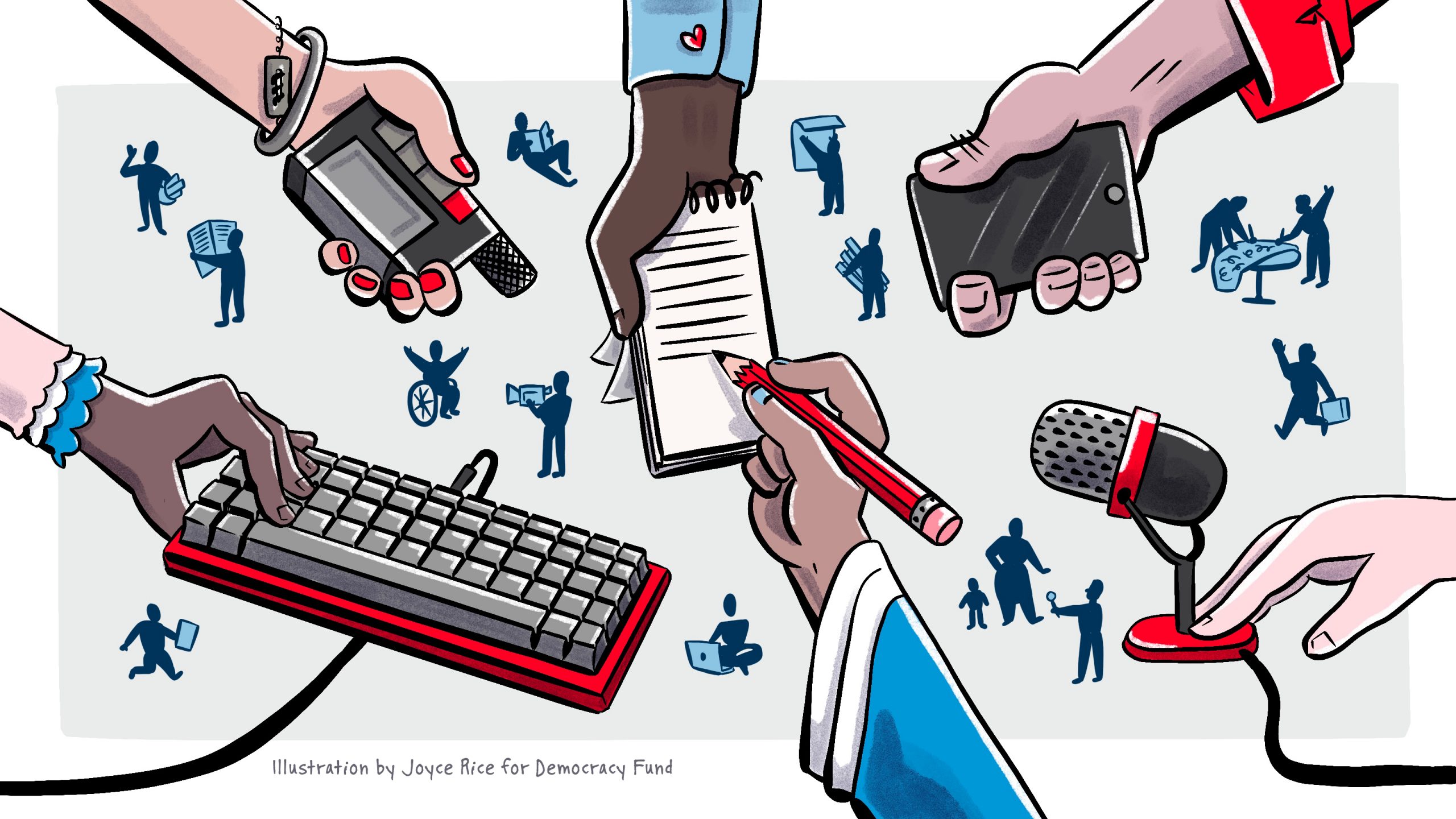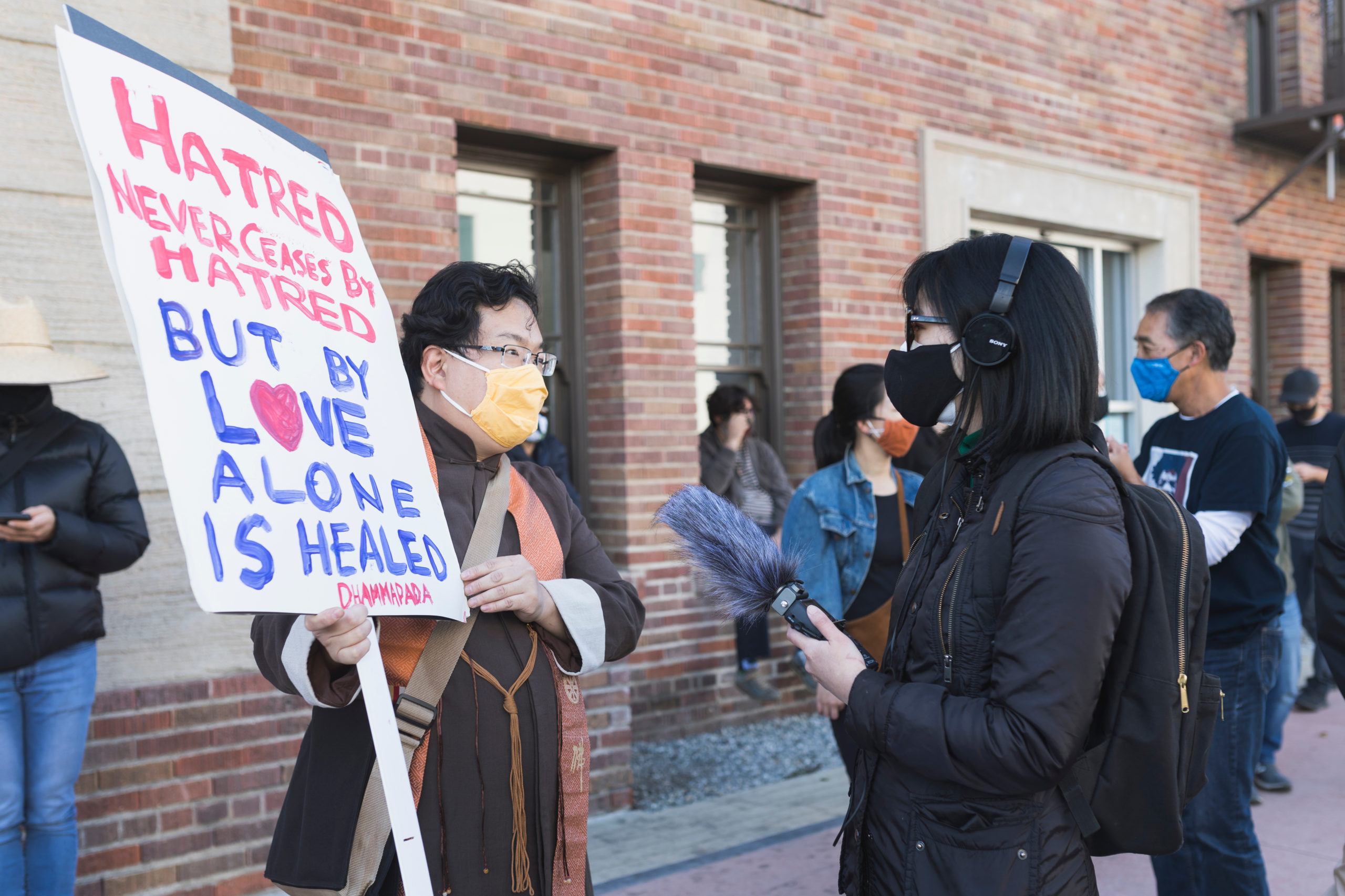Journalists of color make up less than 17 percent of newsroom staff, and account for just 13 percent of newsroom leadership. Why are these numbers still so low? And what is our responsibility as funders?
As we’ve said before, there are serious inequities that need to be addressed to create a culture of journalism that helps people meaningfully participate in our democracy. One of the most persistent is this lack of diversity in newsrooms. This is a problem because newsrooms that do not reflect their communities are not able to serve their communities. Full stop.
So what’s going on? The leadership of majority-white newsrooms still latches onto the myth that there’s a pipeline problem — blaming the lack of diversity on a lack of job candidates. But past research has shown that graduates of color are hired by newsrooms at lower rates than their white counterparts, while a recent survey shows a disturbing trend of mostly mid-career, Black women exiting the industry. Namely, the candidates are there, but newsroom leadership is failing to hire and retain them. Let’s dig into why this pipeline myth is so persistently harmful, what’s really happening, and what funders can do.
A look under the hood of the pipeline myth
Basically, what’s happening is that some newsroom leaders are relying on exclusionary recruiting efforts, such as:
- Prioritizing applicants from elite journalism schools that are often alienating institutions themselves
- Trying to attract talent via unpaid internships that are prohibitive for professionals from low-income backgrounds
- Calling on their existing networks that reflect and replicate the same inequities
When instead they could be lifting barriers by:
- Looking beyond top-ranked journalism schools (or even college degrees!)
- Shifting recruiting efforts to focus on the talent found inside groups like the Asian American Journalists Association, National Association of Black Journalists, National Association of Hispanic Journalists, National Lesbian and Gay Journalists Association, Native American Journalists Association, South Asian Journalists Association – by building authentic relationships, not just reaching out when newsrooms want to circulate a job posting.
- Hacking the hiring process.
But the real myth of the “pipeline problem” is that diversifying newsrooms is all about hiring. It’s not. It’s also about building an inclusive culture that supports the growth and leadership of journalists from all backgrounds.
The deeper issue: newsroom culture
For years, journalists of color have been sounding the alarm on an industry that consistently undermines their lived experiences, excludes them from leadership roles, and pushes them out when they dare to push back.
Last summer, when Black reporters spoke up about the emotional trauma of covering the killings of Black men and women, editors responded by disqualifying them from being objective. They failed to provide them with the support that covering these traumatic stories require. And still, many Black journalists bore the burden of reporting on civil unrest and racism in this country in newsrooms that lacked a deep understanding of racism. Journalists of color, and specifically Black women in journalism, are disproportionately targets of the worst online abuse and harassment when covering these issues. These stories made front pages and headlines, but they came at a steep personal and professional cost.
These issues contribute to hostile environments for journalists from marginalized communities, who are expected to leave their identities at the door until they’re forced to educate their colleagues on issues that hit close to home.
There are many things that newsrooms can do to create a more inclusive environment — from turning to guidance from groups like Journalists of Color on Slack and the Journalists of Color Resource Guide that offer a community for minorities to access support and resources that help them navigate the field, to engaging in difficult conversations about media industry biases that hinder journalists of color. One of these is the myth of “objectivity”, which is rooted in the lens of white men and largely ignores the perspectives and expertise of Black and brown reporters.
As funders, it is our responsibility to follow the lead of these reporters. It is critical that we center the experiences of those most frequently and deeply marginalized within their newsrooms and journalism in our grantmaking practices. We must ensure our investments are not propping up harmful institutions with bandaid solutions, and instead supporting genuine, radical change.
Funding power building is key
If you’re going to fund efforts around increasing newsroom diversity and building more inclusive newsrooms, you must also invest in the power building and sharing efforts that journalists of color are leading. This means funding programs who address retention, mentorship, promotion, leadership, safety, and community building for journalists of color. This is the only way to move from surface-level representation to centering equity and justice in journalism.
Some organizations we currently fund that seek to build and share power with traditionally excluded journalists include:
- The Ida B. Wells Society, an organization dedicated to increasing and retaining journalists of color in investigative reporting.
- Press On, a Southern media collective that catalyzes change and advances justice through the practice of movement journalism through solidarity with oppressed communities that birth social movements.
- OpenNews, a community of journalism peers strengthening relationships across organizations to build a more equitable future for journalism.
- Free Press, whose Media 2070 team is inviting all of us to reimagine the future of journalism with reparations and justice.
Talented job candidates from Historically Black Colleges and Universities, Hispanic Serving Institutions, Tribal Colleges and Universities, and women’s colleges across the country are ready to launch their journalism careers. Funding these organizations will provide support to journalists of color to stay in the industry long enough to build power: become editorial decision makers, become hiring managers, and mentor new staff. They are building the structures, culture, and practice that will help become the next generation of newsroom leaders.





